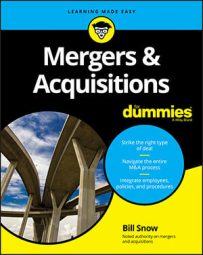M&A is a strange industry because it’s one of the few where the selling functions are in many ways easier than the buying functions. Simply put, quality companies with critical mass are in demand.
After a company gets above a certain revenue level and especially a certain profit level, Buyers of all shapes and sizes start chasing it. When an owner decides she wants to put her company up for sale, she stands a good chance of being in the driver’s seat. Assuming she follows the proper M&A process, she’ll likely have multiple offers, thus putting her in a position of control.
Although definitions vary from Buyer to Buyer, critical mass simply means a company that has size, scale, and scope. In other words, it isn’t a start-up or an unprofitable company selling a product indistinguishable from the competition.
In a very general sense, critical mass may mean any of the following:
Revenues north of $10 million (and the farther north, the better): Larger companies usually have more critical mass than smaller companies because they’re often able to withstand an economic decline. They have more company to go around!
Nothing is particularly magical about $10 million other than the fact that it’s larger than, say, $1 million. But after companies pass this threshold, they’re often considered lower middle market companies, which simply means they’re not a small company anymore.
An unprofitable company with enough revenue may even have value to the right Buyer. Think of it this way: Say two companies each have an annual loss of $2 million. Everything else being equal, would you rather take Company A with $5 million in revenue, or Company B, with $100 million in revenue?
EBITDA north of $2 million: Similar to revenues, the higher the EBITDA (earnings before interest, tax, depreciation, and amortization), the more critical mass for the company. Companies with large-enough profits will always be in vogue with Buyers. A company with only $500,000 in EBITDA may be more susceptible to an economic downturn than a company with $5 million in EBITDA.
Access to C-level decision-makers at clients: C-level executives are the top-ranking (CEO, CFO, and the like) executives at companies. Selling products or services into the executive ranks is often a coveted level of access, and companies that lack that sophistication may be willing to pay a premium for it. Wouldn’t you rather have the CEO, CFO, or some other high-ranking official than some low-level flunky as your decision-maker?
A strong name, good reputation, and/or brand awareness: Many Buyers are interested in obtaining these intangibles. In fact, a solid brand and reputation can help an otherwise troubled company generate a good price during a sale.

